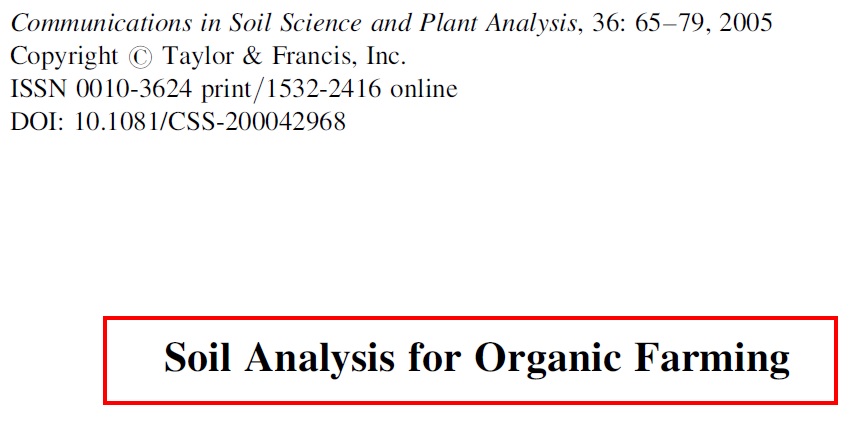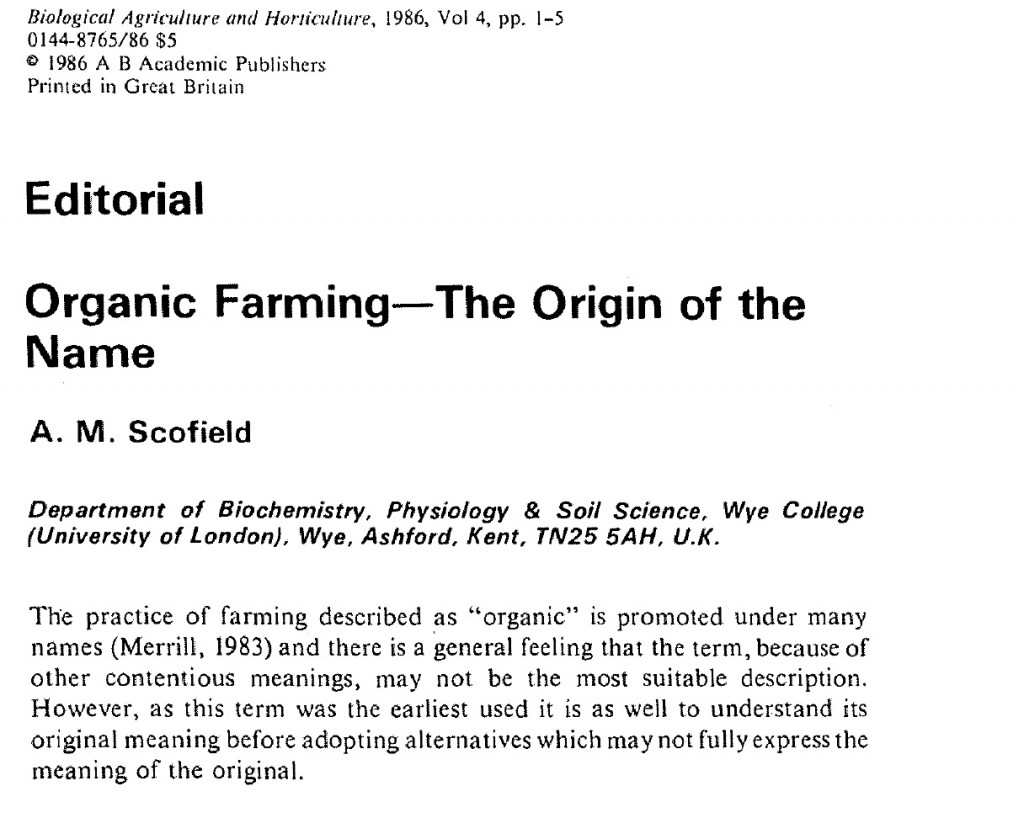 Organic farming according to EU 2092/91 aims at closed nutrient cycles, which means that external nutrient inputs are kept to a minimum. By comparison, conventional farming is input orientated, focusing on high crop productivity. Soil analytical methods for organic farming comprise physical, biological, chemical, and energetic soil tests. The spade diagnosis is an old field test to obtain “in situ” information about soil fertility, which has experienced a renaissance in organic farming. At the laboratory level, organic farming uses the standard chemical analytical methods used in conventional agriculture comprising the determination of organic matter, humus dynamics, pH, soluble plant nutrients and reserve fractions. Special attention is paid to phosphorus, which is determined in three different extracts (acetic, lactic, and citric acid) to assess phosphorus dynamics, which is an indicator of the turnover of organic matter. Compared with conventional agriculture, biological methods are of particular interest in organic farming. Soil biological methods, such as the release of CO2, nitrification, dehydrogenase, amylase and protease activities, reflect the biological activity of soils. Problems of biological methods are the high spatiotemporal variability in dependence on biotic, pedogenetic, and climatic conditions and the lack of interpretation schemes for a transformation into practical recommendations. The soil chroma test is a method that aims to analyze energetic processes in soils. It is a so-called “picture forming” method and characteristic for the biodynamic school of organic farming.
Organic farming according to EU 2092/91 aims at closed nutrient cycles, which means that external nutrient inputs are kept to a minimum. By comparison, conventional farming is input orientated, focusing on high crop productivity. Soil analytical methods for organic farming comprise physical, biological, chemical, and energetic soil tests. The spade diagnosis is an old field test to obtain “in situ” information about soil fertility, which has experienced a renaissance in organic farming. At the laboratory level, organic farming uses the standard chemical analytical methods used in conventional agriculture comprising the determination of organic matter, humus dynamics, pH, soluble plant nutrients and reserve fractions. Special attention is paid to phosphorus, which is determined in three different extracts (acetic, lactic, and citric acid) to assess phosphorus dynamics, which is an indicator of the turnover of organic matter. Compared with conventional agriculture, biological methods are of particular interest in organic farming. Soil biological methods, such as the release of CO2, nitrification, dehydrogenase, amylase and protease activities, reflect the biological activity of soils. Problems of biological methods are the high spatiotemporal variability in dependence on biotic, pedogenetic, and climatic conditions and the lack of interpretation schemes for a transformation into practical recommendations. The soil chroma test is a method that aims to analyze energetic processes in soils. It is a so-called “picture forming” method and characteristic for the biodynamic school of organic farming.
(Communications in Soil Science and Plant Analysis, 36: 65–79, 2005)
